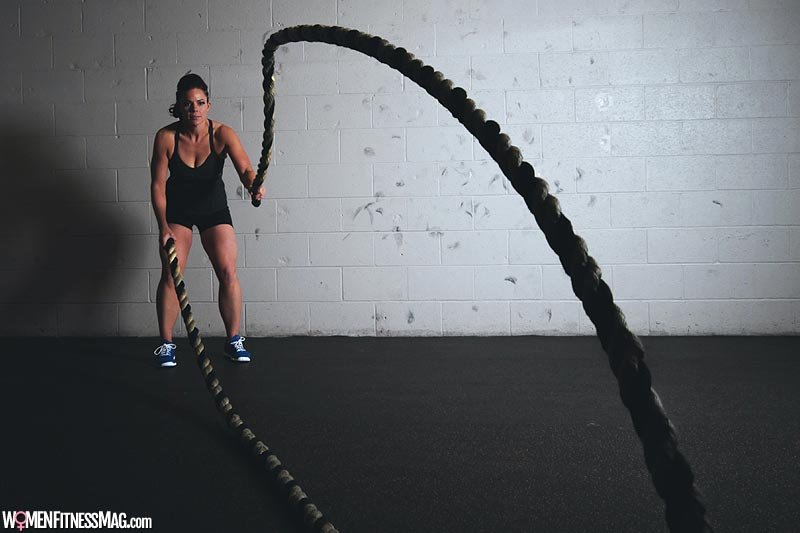What are HIIT Workouts and Why You Should Do Them : HIIT stands for High-Intensity Interval Training.
It is a term for workouts that involve short bursts of exercise done at maximum intensity, alternated with periods for recovery or rest.
What Is High-Intensity Interval Training?
HIIT is a very time-efficient way to exercise. It typically lasts anywhere from 10 to 30 minutes, which makes it a great way to squeeze in a workout when your schedule is tight.
A brief period of exercise is followed by a longer rest period. The rest periods are usually low-intensity, which serve as a form of active recovery.
The exercises depend on your preference. It can include sprinting, cycling, skipping rope, or a combination of bodyweight exercises.
The rule of HIIT is simple: do an exercise at maximum effort, rest, then start all over again until you reach the time you’ve set.
The combination of one work period and one rest period is considered one round or interval.
Thus, HIIT workouts involve timing your work and rest periods, and establishing how many rounds or intervals you would be doing for the entirety of the workout.
From the name itself, all work periods are done at a high intensity. These short bursts of exercise should be done vigorously to push your working muscles and your heart rate near or to their max.
This is why you should take longer rest periods; you do not want to overtax the muscles and lead yourself to premature burnout.
Generally, I recommend a 1:2 or 1:3 ratio of work to rest.
Lastly, remember that HIIT is not the same as conventional interval training. Although, most gen-pop exercise classes tend to conflate the two terms. The latter can be done at a relaxed, low-intensity pace throughout a workout.
Benefits of HIIT

Extremely Efficient for Calorie Burning
When done correctly, HIIT can burn a load of calories even in just a short amount of time. Hence, it is a very efficient form of cardio.
In fact, it has been shown to burn a significantly higher amount of calories than steady-state cardio done in the same amount of time. [1]
Thus, for the time-constrained individual who wants to keep themself in shape and healthy, HIIT will prove extremely beneficial.
An hour’s worth of HIIT can roughly equal to 3-4 hours worth of endurance-type, aerobic training.
The Afterburn Effect
After a HIIT session, your metabolic rate — the amount of energy you burn in a given period — is higher.
One study with female subjects showed that HIIT induced the highest resting energy expenditure.
This means that among all the types of exercises used, the women that incorporated HIIT had the highest metabolic rate among the study’s participants.
This type of workout is not only great for burning more calories during the training session, but also up to 24 hours after. [2]
This afterburn effect, otherwise known as excess post-exercise oxygen consumption (EPOC), is the reason why high-intensity exercise helps you burn more calories than other types of exercise.
Better Body Composition
If burning stubborn body fat is your goal, high-intensity interval training is best for achieving that.
It leads to increased fat oxidation during the workout and long after. A study even showed HIIT making individuals lose 28.5% more fat than moderate-intensity cardio.
High-intensity aerobic workouts essentially deprive the body of oxygen.
This forces it to break down adipose tissues (fat) and convert them to fuel to be used during the workout for muscle contraction, and after the workout for recovery.
It leads to better body composition, which is a primary marker for overall health. The better your muscle-to-fat ratio, the healthier you are.
If you’re afraid you’ll go overboard on the calorie-burning, consume a high-carb and high-protein drink, such as a mass gainer, before a training session.
While your body learns to be more effective at burning pure fat, carbs serve as an immediate energy source.
So, the body doesn’t have to burn muscle for fuel. Protein will provide an anti-catabolic — anti muscle breakdown — effect.
Regulates Your Appetite
If you want to lose some fat but are prone to overeating, HIIT can help you manage your appetite better.
High-intensity exercise reduces the amount of ghrelin — the hunger hormone — your body produces.
Ghrelin stimulates your appetite, increases your food intake, and promotes the storage of fat. So, down-regulating its production is a good thing.
However, you might simply be after the cardiorespiratory and calorie-burning effects of HIIT.
Maybe you want your heart and lungs to be efficient but also want to be able to eat the food you love.
If you are exercising to maintain your weight, I suggest taking weight gain pills after your workouts to get rid of the ghrelin-squashing effects of HIIT.
How to Get Started With HIIT

Doing HIIT is simple, because you rarely need equipment to get started. Unless you want to incorporate workout equipment for progressive overload, you can plan exercises accordingly.
To begin, choose an exercise you like. It can be running, stair-climbing, indoor cycling, plyometrics, or bodyweight exercises.
Then, choose how long you will be doing the work part and the rest part of the interval. As mentioned earlier, go for a 1:2 or 1:3 ratio of work-to-rest.
The work will be done at the highest intensity you can. And, keep in mind that you must go all out throughout the entire period.
To help you perform at your max, you can consume a natural pre-workout concoction beforehand to really help you go hard during every round.
Experiment with lengths of exercise and recovery. If you feel you can go harder, don’t be afraid to crank up the time or the resistance.
Keep a timer and training log so it’s easier to keep track of your progress.
Here’s an example of a 10-minute HIIT workout on a stationary bike:
- Work:
- Bike set at high resistance
- Pedal as fast as you can for 20 seconds
- Rest:
- Bike at low resistance or bike slowly
- Pedal for 40 seconds
- Repeat for 10 rounds
Conclusion
High-intensity interval training is a very efficient way to exercise and burn calories. It is also an effective way to burn fat, regulate appetite, and, hence, look and feel healthy.
You’re the boss when it comes to crafting your HIIT program. You’re in control of the exercises, intervals, and when you plan to do it — so, you need to commit to it if you want to see results!
If you find it hard to make time for exercise because of constantly jam-packed schedules, give HIIT workouts a try and reap its time-saving and health-improving benefits! Get moving, ladies!
Author :
Imad is the founder and content creator at Foodinplay.com. As a former skinny guy who struggled to gain mass, his aim is simple: cut through the jargon and share everything he learned along the way.
Related Videos about What are HIIT Workouts and Why You Should Do Them :
What is HIIT? 7 Proven HIIT Benefits and How to Do It Properly
Why HIIT For Fat Loss? (HOW IT WORKS!)
HIIT Workout Tutorial – What Is HIIT & How Do I Do It?
How Hiit Exercise Works I 4 Proven Benefits (7 Minute Mornings)
High Intensity Interval Training (HIIT) – Maximum Results, Minimum Time
The top 6 benefits of high-intensity interval training
4 Unusual Benefits of Doing HIIT Workouts
What are HIIT Workouts and Why You Should Do Them
advantages of hiit training, benefits of hiit vs cardio, hiit workouts at home, how much weight can you lose with hiit, example of hiit workout, physiological benefits of hiit training, hiit benefits and risks,




